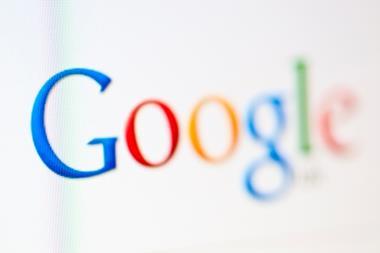Greg Orme, author of The Spark, explains why failure, chaos and the courage to take creative leaps are far more rewarding than playing safe

Smart leaders love business creativity. It has produced every breakthrough since the dawn of time. From the Model T Ford and Facebook to the smartphone, everything began with a spark of creativity. That spark changes the rules of the game while increasing profit.
Business creativity delivers 100% of revenues from innovative new products, and all the cost savings and quality improvements from more effective processes. But despite the evidence of the commercial power of creativity and innovation, many companies are risk-averse and uncreative.
Branding guru Wally Olins, one of the team that came up with the identity for the mobile phone company Orange, provides this explanation: “They have a defensive mentality. All they do is listen to what focus groups tell them.”
Being boring
The risk of failing to foster a creative business culture is significant, yet business creativity is often overlooked because the pitfalls seem to lie somewhere over the horizon. But sooner or later, the economic reality of ‘creative destruction’ annihilates those businesses that fail to adapt fast enough and instead stay wedded to the safe familiarity of old ways. Business creativity is the only response to a commercial world of accelerating change. It helps firms avoid ‘Kodak moments’. Kodak invented digital camera technology, but then refused to cannibalise its lucrative film-based business model. The company went bankrupt in 2012 – suicide by complacency.
Another risk is losing the global war for talent. Year in, year out, the majority of people report that they are unengaged by work. One of the best ways to persuade talent to flock to your gates is by offering a creative working environment. This is especially true for the younger generation, who are demanding an unprecedented level of freedom at work. A recent survey by London Business School found that almost 40% of Generation Y employees start a new role already planning their next career move and are rarely dissuaded by promotion prospects, which now take third place to work/life balance and organisational culture.
The fear hurdle
The biggest single barrier to developing a creative organisational culture is managerial risk aversion. A journalist once asked Formula 1 driver James Hunt, a legendary risk-taker: “James, what’s the secret to winning?” Hunt paused for effect, and then deadpanned back to the startled reporter: “Big balls.”
The creative process is painful, messy and risky. Like Hunt, it doesn’t race along in nice, neat lines – it’s unpredictable. During the development and launch phase of a new initiative, it is unclear how things will work out. You need to have ‘big balls’ to stake your reputation and hard-earned money on what will often amount to hunches. As Einstein said: “If we knew what we were doing, it wouldn’t be research.”
Living with creative risk
Part of the challenge of leading a creative, entrepreneurial culture is living with risk. If the leader doesn’t show bravery and stand up for new ideas, who will?
A tongue-in-cheek staff handbook from the global creative agency Ogilvy & Mather amusingly illustrates what happens when teams seek to lower the risk of a new advertising campaign to zero: “The creative director thought it was funny. The managing director thought it was funny. The chairman thought it was funny. The tea lady thought it was funny. The client thought it was funny. The client’s wife thought it was funny. The client’s butcher thought it was funny. OK now, let’s research it to see if it’s funny.”
Fail fast
To foster a creative culture, business leaders need to ensure that staff feel safe to fail. John Herlihy, who heads Google’s European operations centre in Ireland, says: “Part of our culture is that we celebrate failure. It’s OK to fail. If you are not failing enough, you are not taking enough risks. So what we do here is fail, and fail fast.”
Sir Richard Branson, founder of the Virgin empire, points out the value in failure: “You don’t learn to walk by following rules. You learn by doing and by falling over.” A skilled leader must accept failure and point out what the team has learnt. Of course, they must not flinch from assessing why things have gone wrong. Where required, though, leaders must vigorously protect the people behind the failed product. The same mistakes should never be made twice, but failure is part of the creative business model and the buck stops with management.
Rapid recovery
Bravery sometimes means introducing a little chaos. After all, creative tension starts from the top.
The media streaming company Netflix tells its staff they must be careful not to cause an irrevocable financial disaster or a catastrophic legal issue. That aside, “Rapid recovery is the right model. Just fix problems quickly. We’re in a creative-inventive market, not a safety-critical market like medicine or nuclear power. You may have heard preventing error is cheaper than fixing it. Yes, in manufacturing or medicine. Not so in creative environments.”
Use your intelligence
Of course, even in creative businesses, risk still needs to be managed. Part of the risk-assessment process – gathering insight and intelligence – is key to successful creativity.
In 1999, the whisky brand Johnny Walker was in decline. It challenged the advertising agency Bartle Bogle Hegarty (BBH) to come up with a novel, enduring brand idea that could transcend borders and appeal to global markets.
At that point, any campaign about whisky featured one of two schools of clichéd imagery: either traditional heather and kilts to represent Scottish heritage or the conceit that whisky equals success, rammed home by footage of a prosperous businessmen sipping from a glass while staring into the middle distance on the back of a yacht.
BBH realised Johnny Walker needed new and younger customers. Research into the attitudes of younger consumers sparked creative thinking. From this came a big idea. For the younger generation, success is not a place, it’s a journey – you never arrive.
From the idea of personal progress, the ‘Keep Walking’ solution was born. The campaign featured younger people’s down-to-earth personal progress stories. It has since been adopted by 120 countries, where Johnnie Walker’s sales value has risen by 48%, while the whisky market has declined by 8%. BBH’s founder and creative director Sir John Hegarty told me: “That’s how intelligence, insight and strategy give you the confidence to jump further with an idea. They lead you to better creative execution.”
Innovation requires creative cultures, backed up by leaders prepared to accept calculated risks. Management teams need to gather the data, generate insights and assess risk. But they must also take creative leaps or flirt with the biggest risk of all: being left behind by braver, more creative competitors.
Greg Orme (gregorme.org) is an associate programme director of executive education programmes at London Business School. He is the author of The Spark – How to Ignite and Lead Business Creativity (FT Publishing, 2014)
Odd bedfellows
Leaders need to be comfortable with the yin and yang of creative business. Creative businesses – and the people who lead them – are like circus performers who teeter on rolling steel drums with a foot planted at opposite ends of a plank balanced on the top. They need to make the constant adjustments necessary to hold the equilibrium. It isn’t a simple black or white response to the question: ‘Are we creative or commercial? Are we A or B?’ The answer must be: ‘We are both creative and commercial – we’re A and B.’
The tension at the heart of a creative business is the constant discussion, debate and occasional battle between creativity and making a profit. The creative-versus-commercial tug-of-war needs to go on forever. An honourable tie is what we’re looking for, but with creativity celebrated more obviously, widely and passionately.
Jeremy Shaw, who until a year ago was chief operating officer of digital advertising agency Kitcatt Nohr Digitas, concluded there was something to be gained from letting all staff know how they had spent their days and weeks, using timesheet records to make the link between activity and profitability. But he didn’t run this exercise on a weekly or even monthly basis; he knew this would emphasise profit too much.
Steve Jobs was aware of this balance at the heart of creative business. At the end of his famous product demonstrations, Jobs finished by showing a sign at the intersection of ‘Liberal Arts and Technology Streets’. He knew that creativity occurs when different attitudes, knowledge sets and disciplines intersect. He was a leader who connected creativity to technology, art to engineering. There were always better techies (Bill Gates for one) and better designers (Jobs hired one: Jonathan Ive). But Jobs was a connector who enabled electricity to flow between the two opposite poles.
A creative leader must embrace opposites and demonstrate that they’re not mutually exclusive. In this way, you can transform normal business wisdom into creative business wisdom.
Creative businesses must embrace the fact that opposites can – and do – live together under one roof. After all, the clue is in the seemingly odd bedfellows of the two-word descriptor: creative + business.
Sometimes it’s not about balancing opposing ideas, but about resolving tension by transforming people’s views of what a business is all about. A creative leader becomes an expert in translating that language of normal business into creative business speak.
This is an excerpt from The Spark – How to Ignite and Lead Business Creativity




















No comments yet